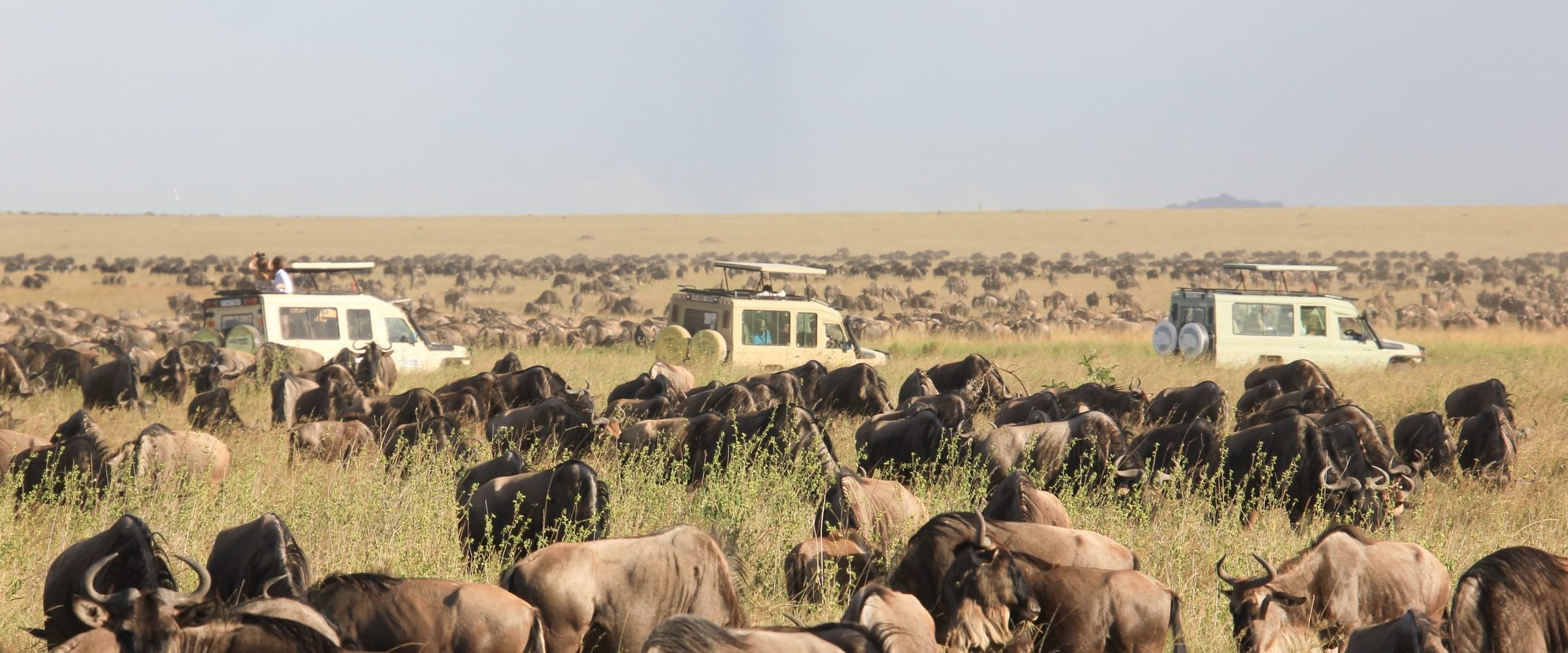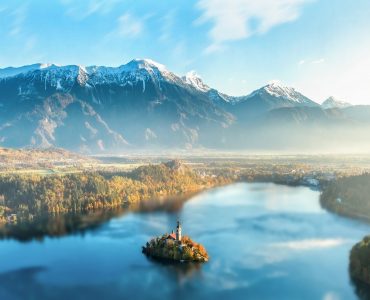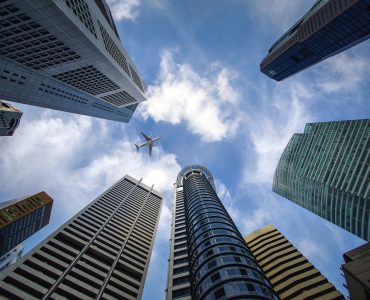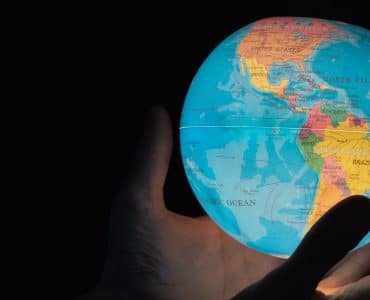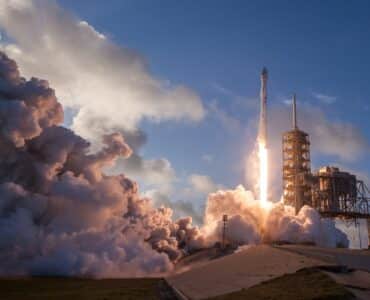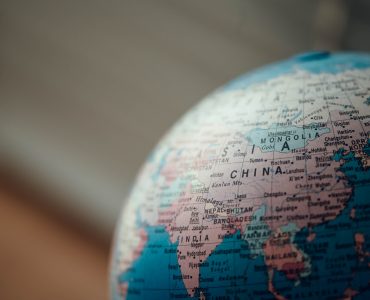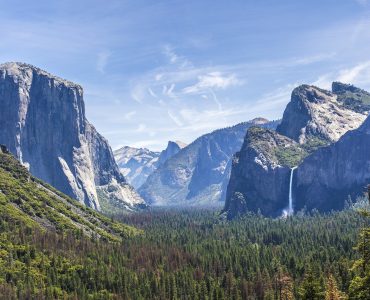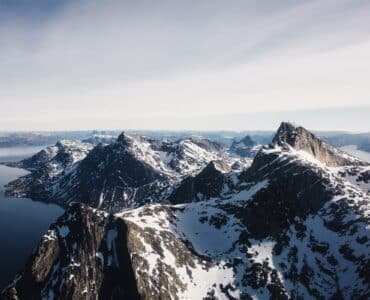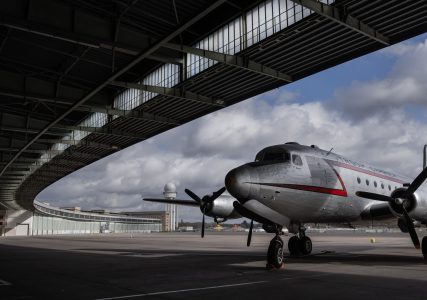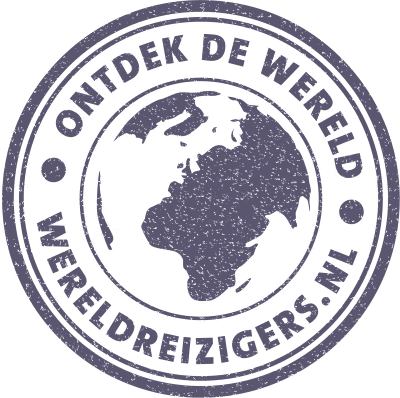Every year millions of hooves drum against the plains of Africa† Wildebeest, zebras and gazelles devour hundreds of miles as they move through the Serengeti (Tanzania) and the Maasai Mara (Kenya) Pull. Their big appetite, also called the Great Migration, will lead them from drought to water and green grass. This is not as easy as it sounds! The road to greener grass and a better life will never end and will always be fraught with danger.
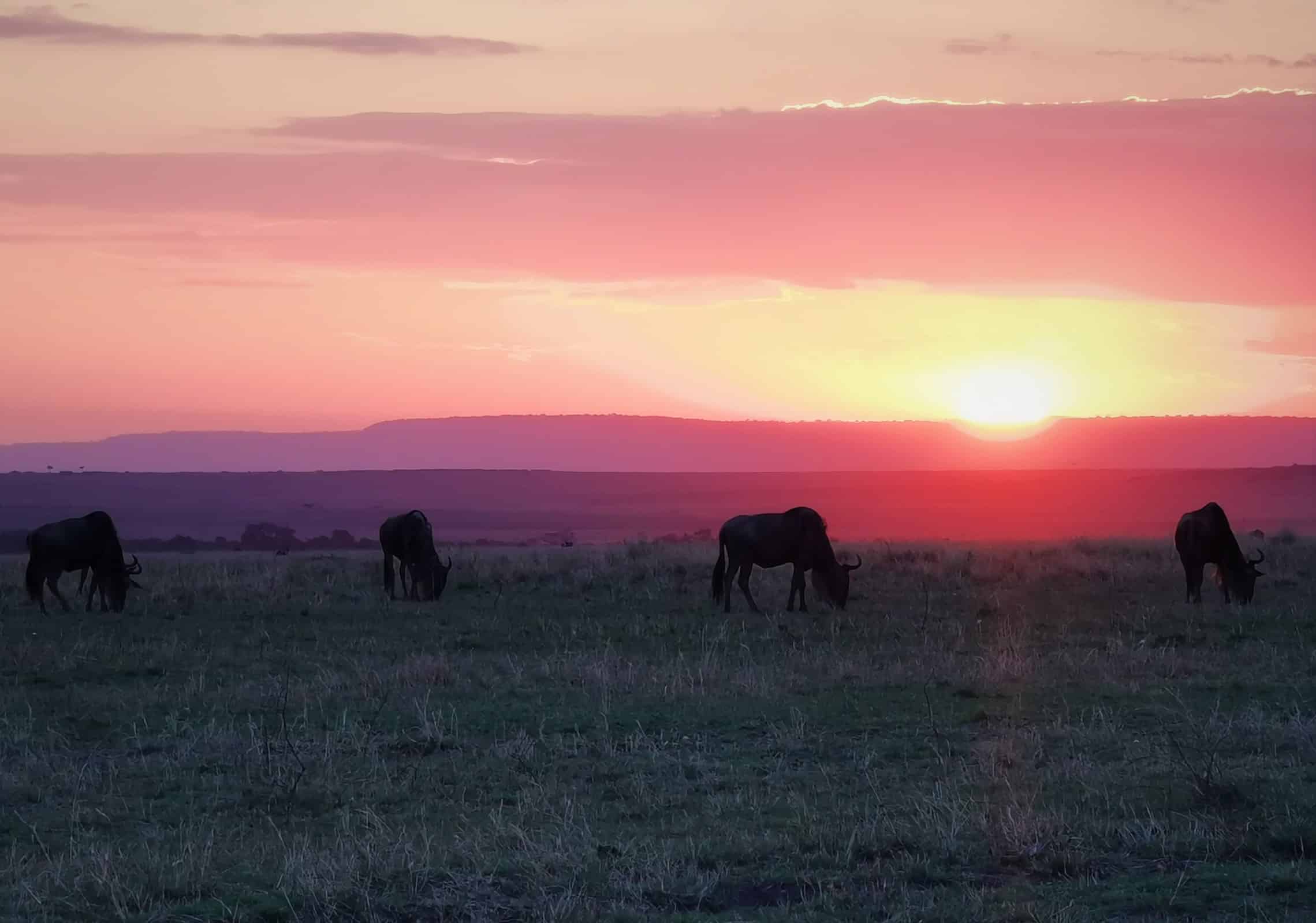
More Worldly Articles:
- Worldly | All countries in the world | List of countries + population
- Worldly | What are the 10 largest countries in the world?
- Worldly | What are the largest islands in the world?
- Worldly | How many countries does Africa have? And what is the number of inhabitants?
- Worldly | Which are the safest and most dangerous countries in Europe?
- Worldly | What are the safest and dangerous countries in Africa?
- World wise | Information about the world | Continents, countries and facts
- Worldly | Which languages are most spoken in the world?
- Worldly | What are the 7 Wonders of the World?
See and experience the Great Migration with your own eyes! That is perhaps one of the most wanted bucket list experiences for world travelers, animal and nature lovers. And so does mine. I therefore decided to see the Great Migration with my own eyes in Kenya. You read in this worldly article all about it and you will also see many beautiful images of my experiences.
The first part of the article mainly contains general information about the Great Migration. When is it? Where is it? And this is supplemented with general but very interesting information about the world's largest event in the animal kingdom.
The second part of this article is mainly about my personal experiences. The personal report of my safari. You will see beautiful (video) images of one of the most beautiful weeks of my life. If you want to go directly to the personal images, use the headings / hotlinks in the table of contents below.
Information about the Great Migration
What is the Great Migration?
The Great Migration is an ever-moving circular migration of millions of animals through the Serengeti-Mara ecosystem. This makes it the largest herd movement of animals on Earth. With up to 1.000 animals per km², the large herds of wildebeest can even be seen from space!
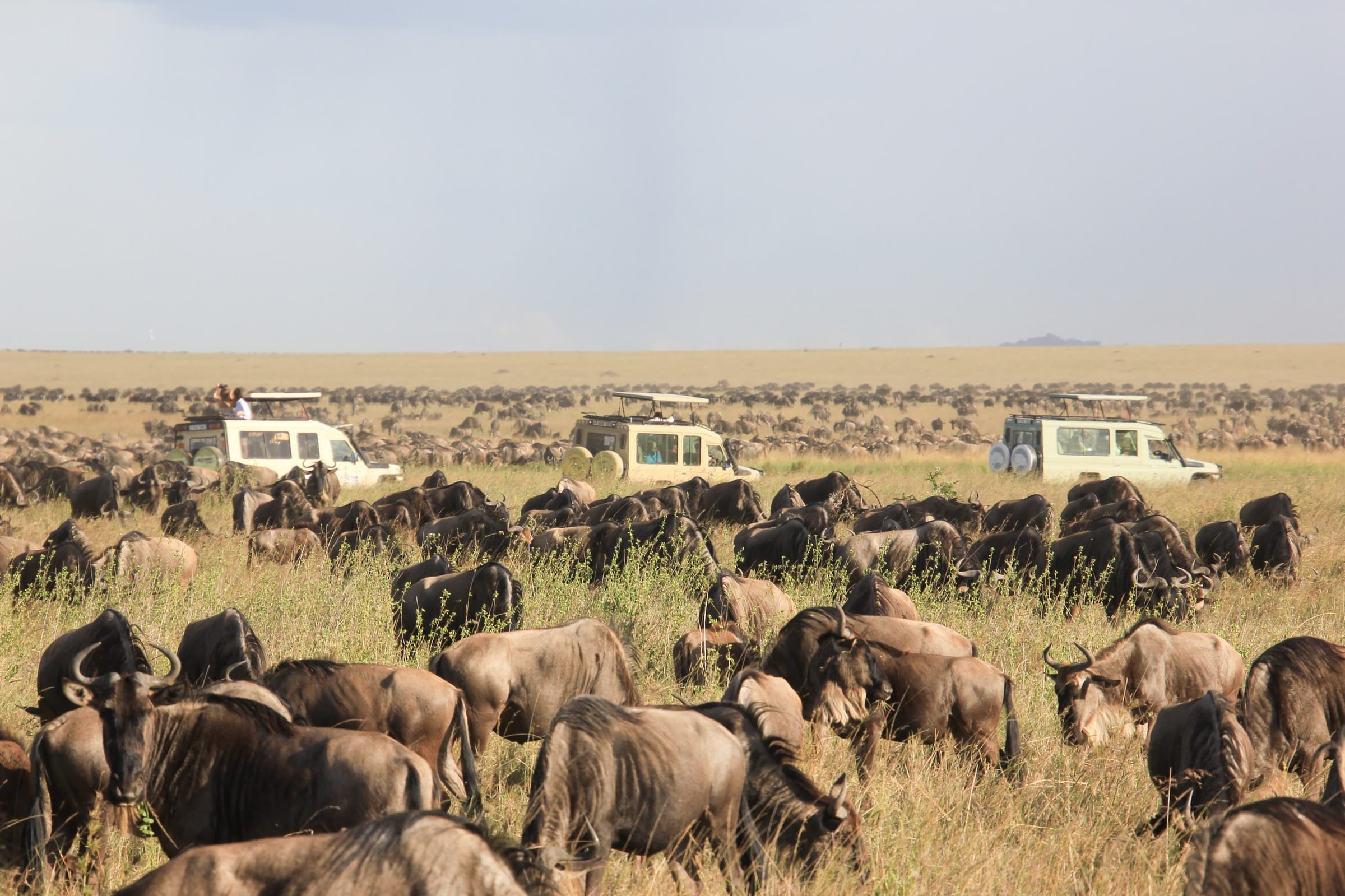
The numbers are astounding: over 1,2 million wildebeest and 300.000 zebras along with hundreds of thousands mice and other gazelles. They move in a constant cycle through the Serengeti-Mara ecosystem in search of nutritious grass and water.
Guided by survival instincts, each wildebeest travels 800 to 1000 km on its individual journey along ancient migration routes. Hungry predators such as lions, leopards, cheetahs, hyenas, wild dogs and crocodiles ensure that only the fittest survive in this natural spectacle known as 'the greatest show on earth'.
Where will the Great Migration take place?
The migration carries the animals of the Ngorongoro Conservation Area in the south of the Serengeti in Tanzania, up through the Serengeti and about the Masai Mara in Kenya and back. The journey is ravaged by danger: young calves are grabbed by predators, the slow ones are brought down by lion troops, brave beasts break legs on steep river slopes, and crocodiles take their share of those left behind while the weak and exhausted ones drown.
Green grass and weather influences
The three groups of migrating grazers (Gnus, Zebras and Gazelles) have different grass-eating habits. If one group eats the top of the tallest grass, the next group eats some of the medium-high grass, until it is eventually almost completely eaten and the herds have to continue their migration. This means that each group sticks to its own species with only a small overlap. The grasses of the plains have a high protein content and are also high in calcium.
How do the animals navigate?
It's unclear how the wildebeest know which way to go, but it's generally believed that their journey is determined primarily by their response to the weather; they follow the rain and the growth of new grass. Although there is no scientific evidence for this, some experts believe that the animals in the distance react to lightning and thunder. It has even been suggested that wildebeest can locate rain more than 50 km away.
When is the best time to travel to the Great Migration?
What is the best travel time? When is the best time to travel to Kenya or Tanzania to witness the Great Migration? Fortunately, the answer is simple: the best time to travel for the Great Migration is simply all year round. It just depends on where the animals are and what exactly you want to see. There are different phases that you can focus on. You can therefore admire the Great Migration all year round.
How the Great Migration moves all year round
The constant movement of columns of wildebeest, zebra and gazelle follows an ancient route. After calving in the southern part of the Serengeti in Tanzania the animals travel clockwise. They walk through the Serengeti up in the direction of the Masai Mara in Kenya† By the end of the year, they return.
There is always drama along the way. Thousands of animals are captured by predators and thousands more are born, replenishing the numbers. Thus the circle of life is maintained.
Whether the wildebeest are calving or trying to cross rivers while avoiding predators, the migration is in constant flux all year round. The illustration below clearly shows where the migration is located at any time of the year.
Note: the months below are not a guarantee. It is of course possible that due to extreme drought, heat or cold the animals decide to move on sooner or later.
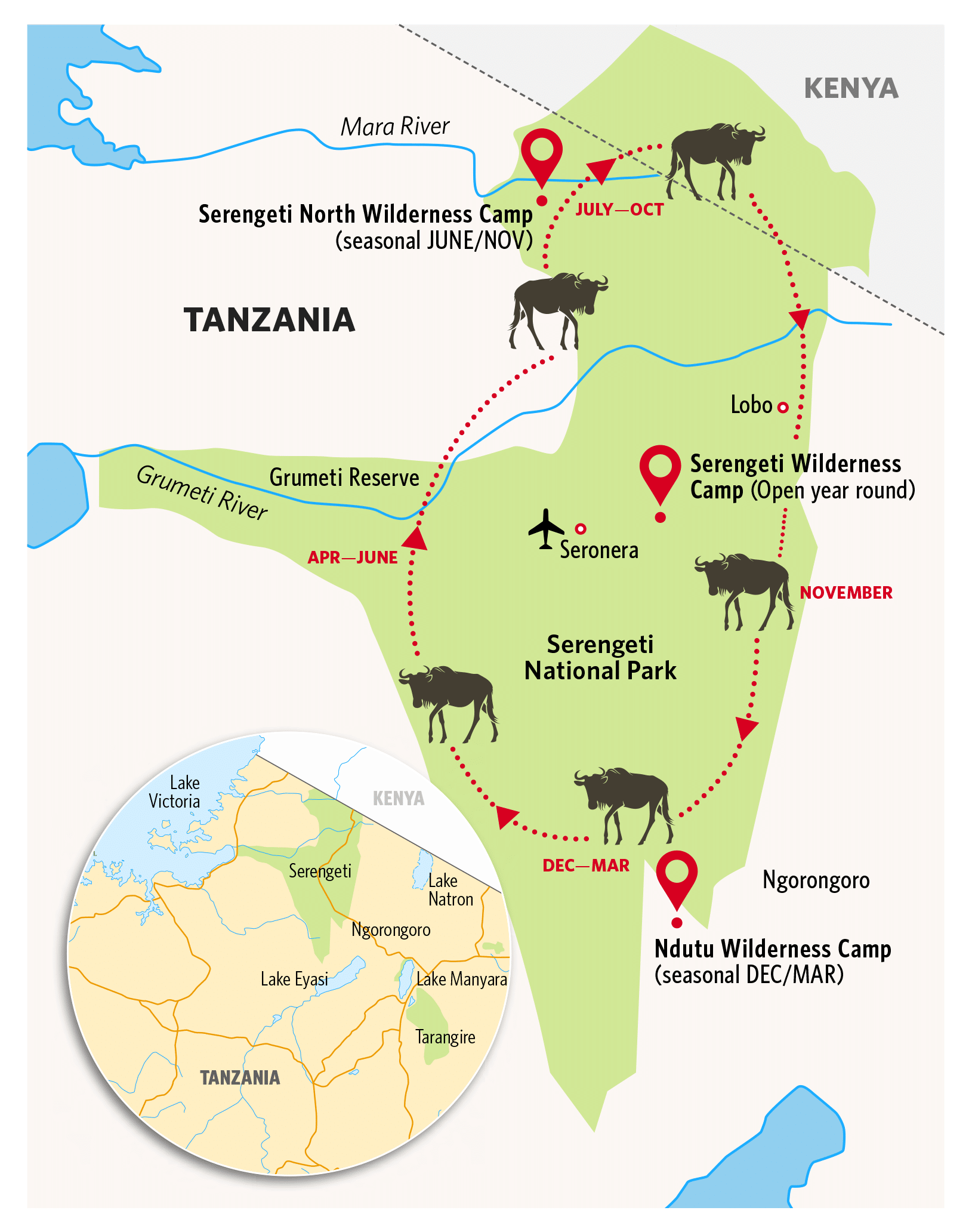
January, February and March
Every year around January, the migration is via a trek to the southern tip of the Serengeti. The animals walk along the eastern edge into the Ngorongoro Conservation Area. The plains here are usually rich in nutritious grass during these months. This is also the time when the herds have the best conditions to raise their newborn calves.
While there is no real beginning or end to this phase of the Great Migration, it seems reasonable to call the wildebeest birth season the start of the migration. Around the end of January or February, the herds occupy the grassy plains. You will find them especially in large numbers around the Ngorongoro Crater and the Olduvai Gorge. About 400.000 calves are born here within two to three weeks, or almost 8.000 new calves per day.
The abundance of vulnerable young calves means the surrounding predators also spring into action. For them it is now easy to hunt because of the large number of young wildebeest.
This is by far the best travel time for those interested in seeing calves and the drama of the big cat hunt. Some hotspots for this are: Olakira, Kimondo and Ubuntu.
April and May
After the wildebeest give birth to their young in February and March, the great migration gets moving again. Herds head northwest towards the fresher grasses of the central Serengeti around April. During this period they take thousands of zebras and smaller groups of antelopes with them.
In May the herds of wildebeest stretch for several kilometers while the rest of the animals begin to gather at the Moru Kopjes. The mating season begins towards the end of May and male wildebeest compete against each other. During this time, the journey continues at its leisure. Countless grazing wildebeest, zebras and gazelles, as many as you can count.
Gradually, the movement gains momentum and the wildebeest begin to gather in western Serengeti. The herds form in huge numbers along the puddles and channels of the river. They must cross the river to continue their journey. This river crossing may not be as spectacular as the famous Mara crossings. Yet there are still enough wildebeest to give the Grumeti crocodiles a real feast.
June and July
In June, the dry season begins with high concentrations of wildebeest and zebra in the western Serengeti. Also, large numbers reside on the southern banks of the Grumeti River. Each migratory animal must face the challenge of crossing the crocodile-infested river. The first of many daunting and exciting river encounters.
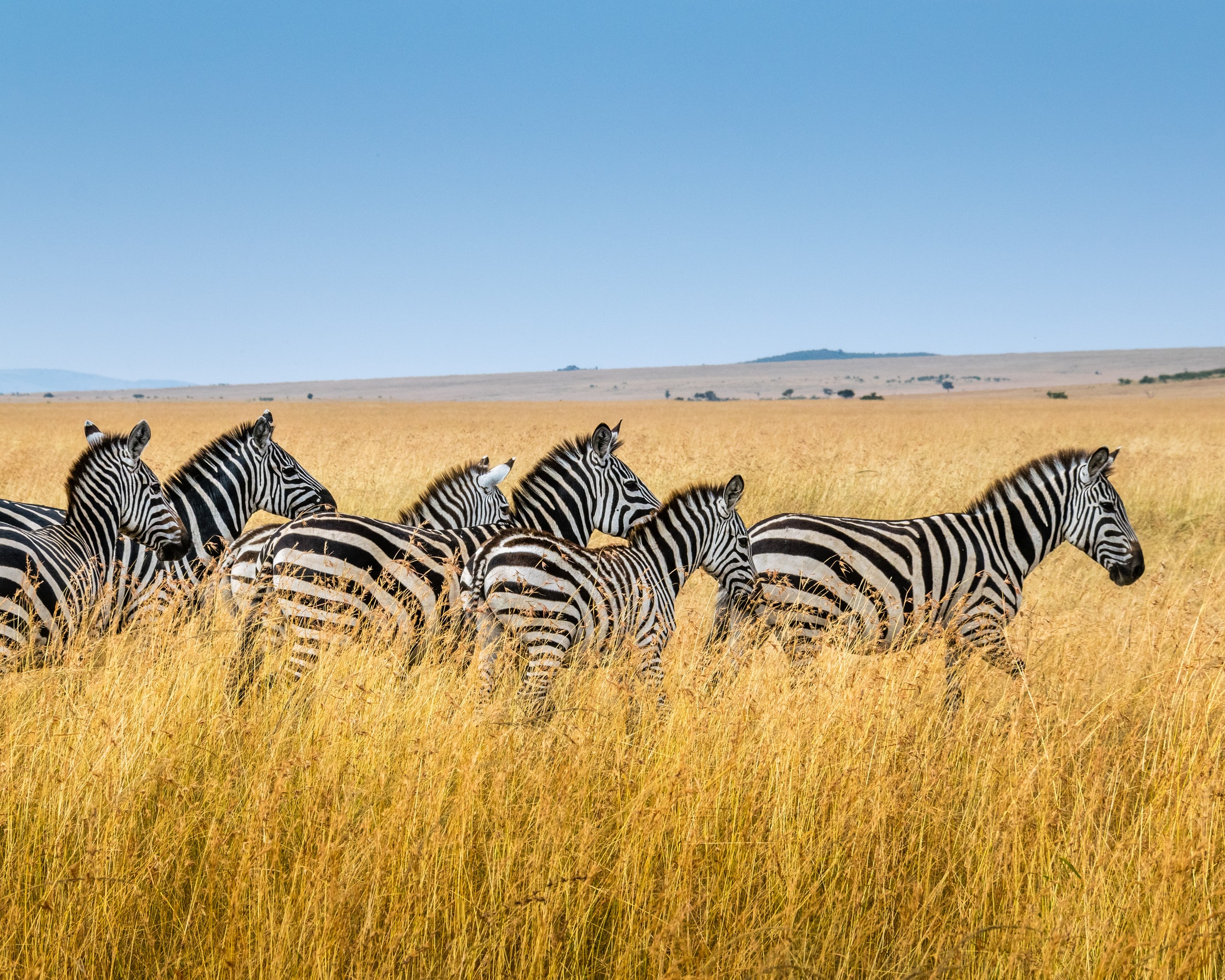
As June turns into July, the hundreds of thousands of wildebeest and zebras move further north. They run along the western edge of the park to an even more risky barrier: the Mara River in the north of the Serengeti. These river crossings are arguably one of the most exciting wildlife events on Earth. They usually start at the beginning of the high season in July, but the timing all depends on the wildlife.
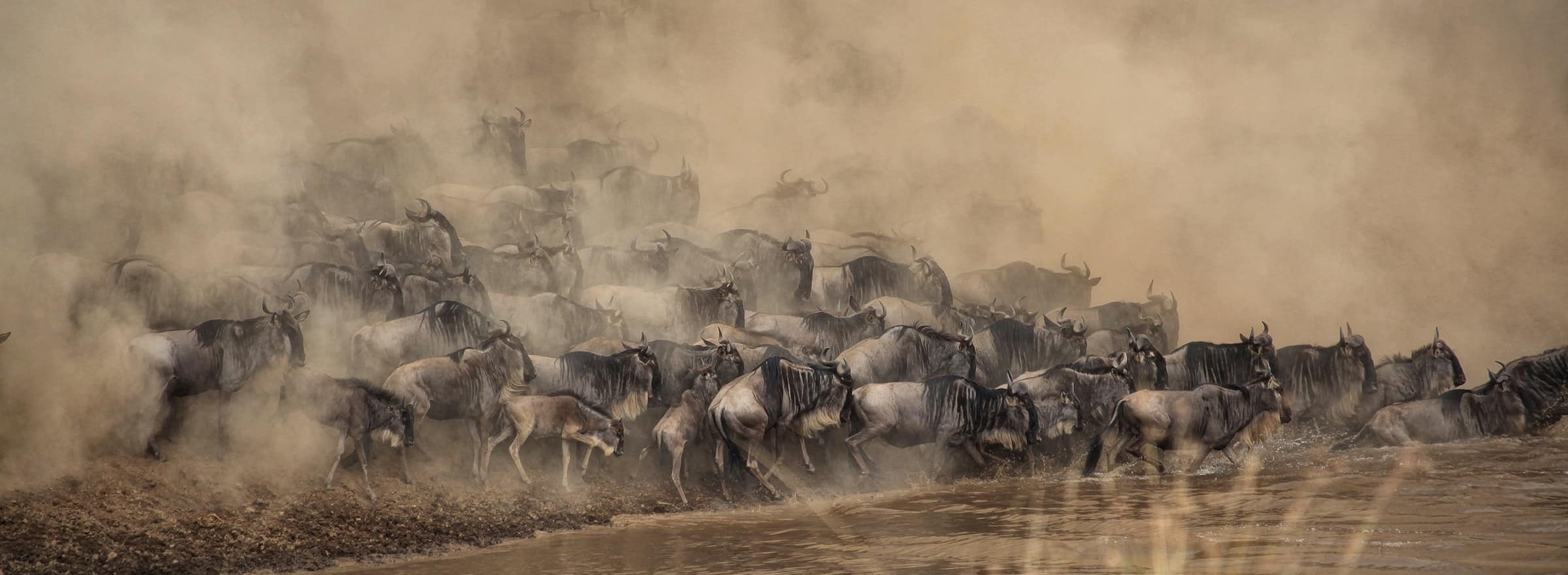
The herds are usually found in the northern Serengeti during the month of July. Later in July, the animals that have successfully crossed the Mara River will also be found in Kenya's Masai Mara.
August, September and October
In August, the herds face the challenge of crossing the Mara River. They are scattered throughout the northern region of the Masai Mara and the stragglers in the northern Serengeti. In years when the river is in full flow, the panic and confusion at the river crossings can cause huge losses of lives. The combination of waiting predators and strong currents is fatal for many animals.
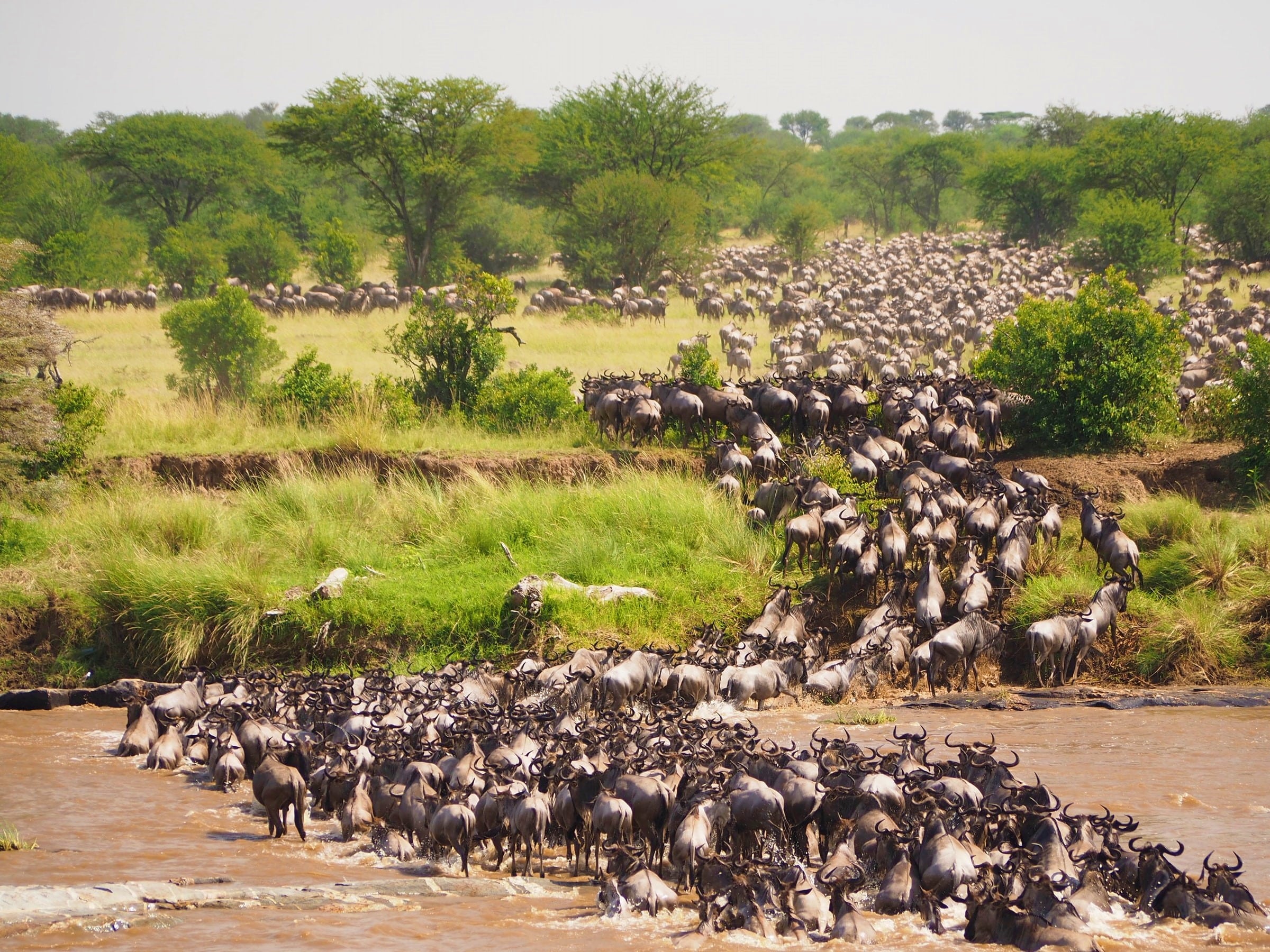
But even in years of relatively soft flowing water, the crocodiles take their toll. Not to mention the lions and other large predators that patrol the riverbanks. Numerous red animals are ready to ambush any wildebeest that makes it across. This is what makes river crossings so special.
"There is not a single crossing: in some places there are only a few individuals, while other places see multitudes of animals crossing for hours without interruption."
Chris | Wereldreizigers.nl
From September to October, the greatest chaos has ended and the migrating columns have gradually moved east. However, the wildebeest will once again have to face the heavy waters of the Mara River. After all, in order to follow the green grass, they have to make the return journey south.
November and December
After the rain in East Africa in late October and early November, wildebeest migrate from Kenya to the eastern border of the Serengeti. The come along the Namiri Plains, an area known for excellent cheetah sightings. In December they are spread over the eastern and southern areas.

In the early months of the new year, the grasses in the deep south of the Serengeti are lush with rain. This attracts herds of wildebeest and hundreds of thousands of zebras and other plains animals. The cycle continues when the calving season starts again.
How I experienced the Great Migration safari
To sum it up in one word: amazing. As owner of Wereldreizigers.nl I have seen and experienced many beautiful things in my life. As far as I'm concerned, this experience belongs in the top 5 of bucket list activities that you must do once in your life, it's that cool.
“Experiencing the Great Migration for myself, despite fierce competition from other great things I've seen, is definitely in my personal top 5”.
Chris | Wereldreizigers.nl
You will gain different experiences during a visit to the Great Migration. You fly (if you wish) in a mini-plane directly to your safari area. You will also see beautiful landscapes and count countless animals! And with a bit of luck you will also see lions, leopards or vultures eating a meal. In addition, you will meet the local population (the Masai) and you will experience exciting moments in your 4×4. A river or mud puddle has to be crossed regularly, which is an experience in itself.
The flight to Maasai Mara
You can reach the Masai Mara in Kenya in two ways: by car or by plane. The Masai Mara area is about 8 hours drive from Nairobi and costs about 80 euros per person in a minivan (one way). Prepare yourself mentally: the roads here are terrible.
Those who are willing to pay a little more can also fly by (propeller) plane from Nairobi to Masai Mara. This costs about 100 to 180 euros per person (one way), depending on the season. Usage this link to immediately see what the flights cost for your travel period.
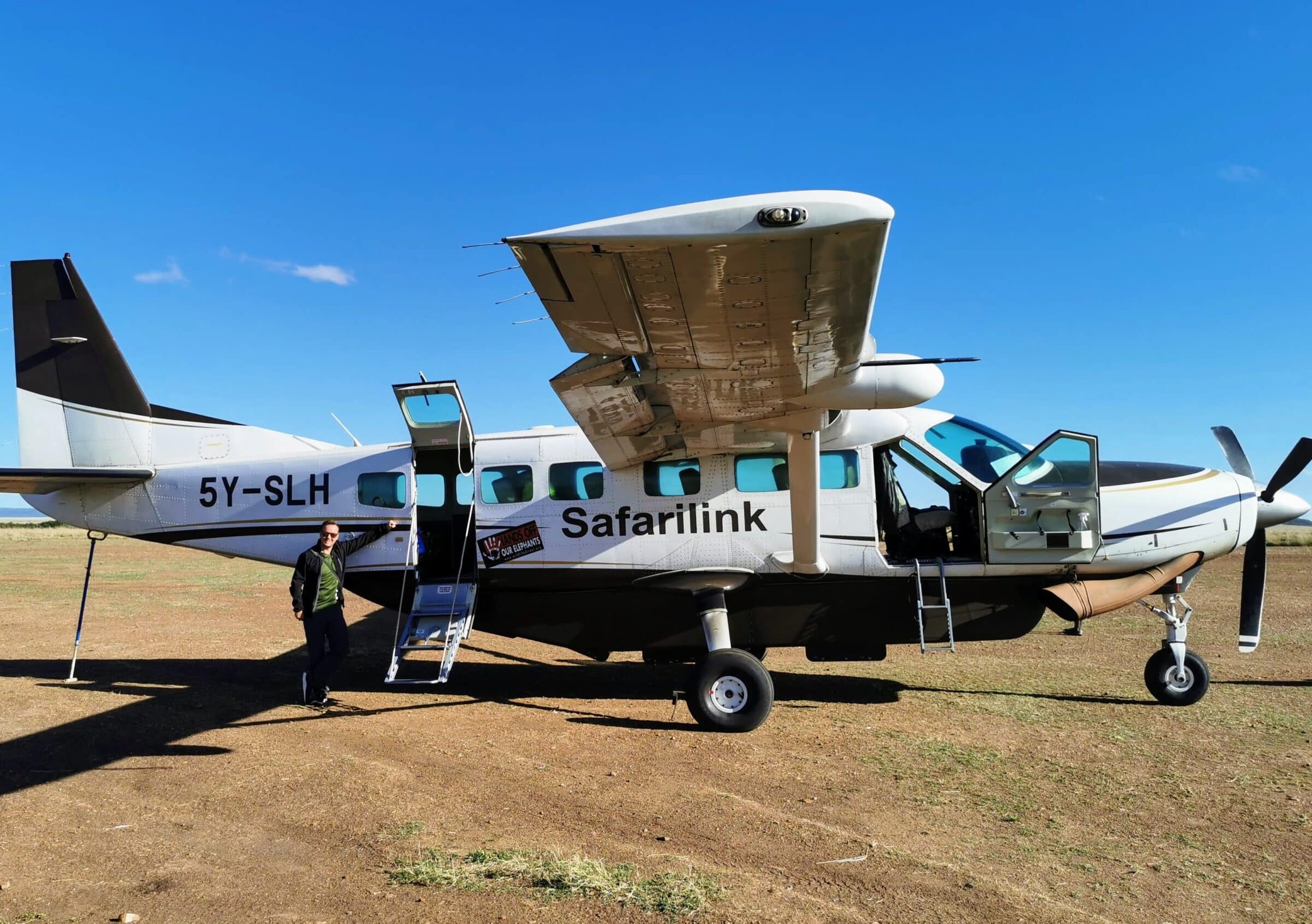
I ended up flying with safarilink, a mini plane that only fits 12 people. I was in the front row and because the cockpit is just open, I could see everything the pilots were doing. Really amazing!
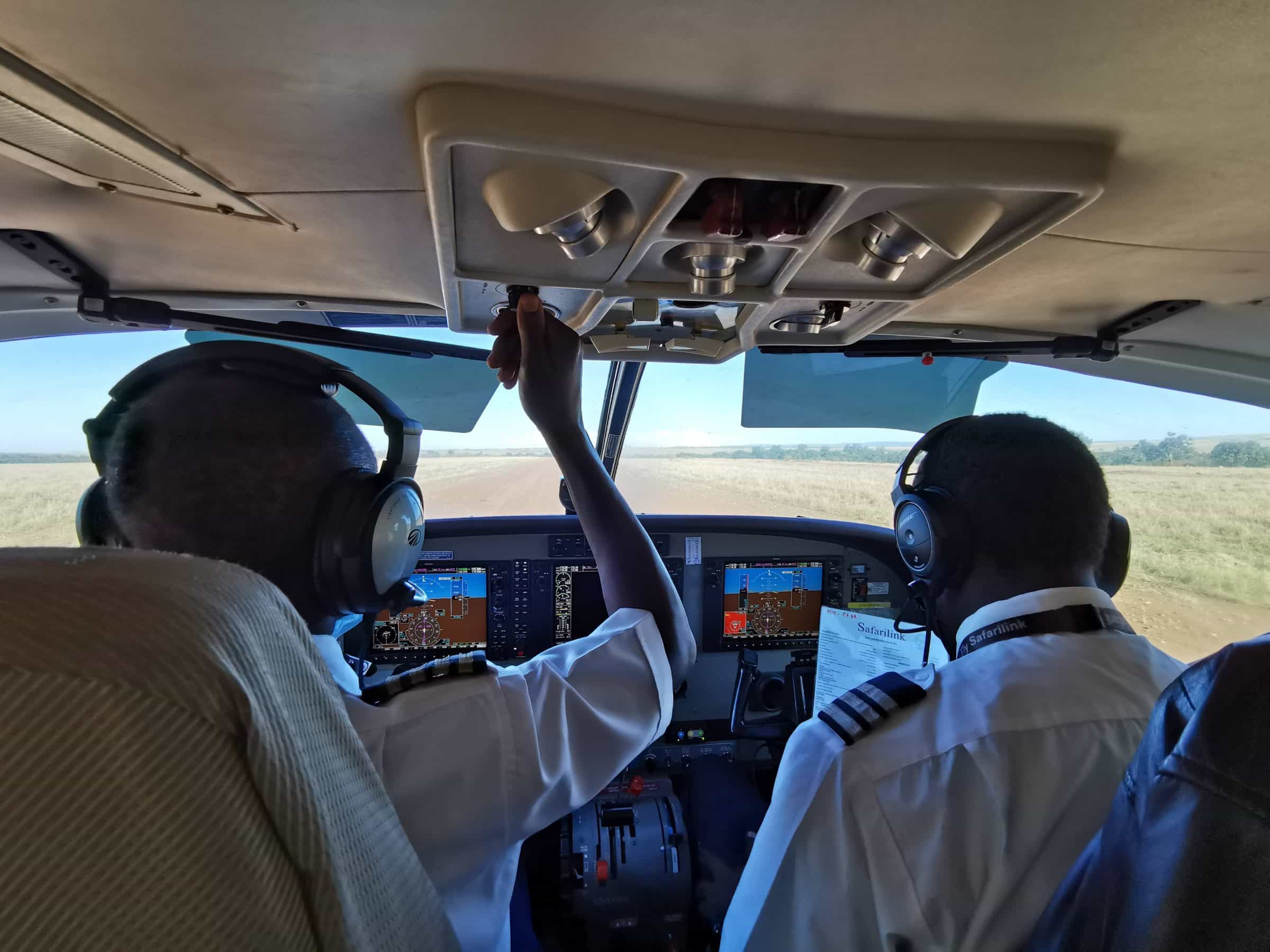
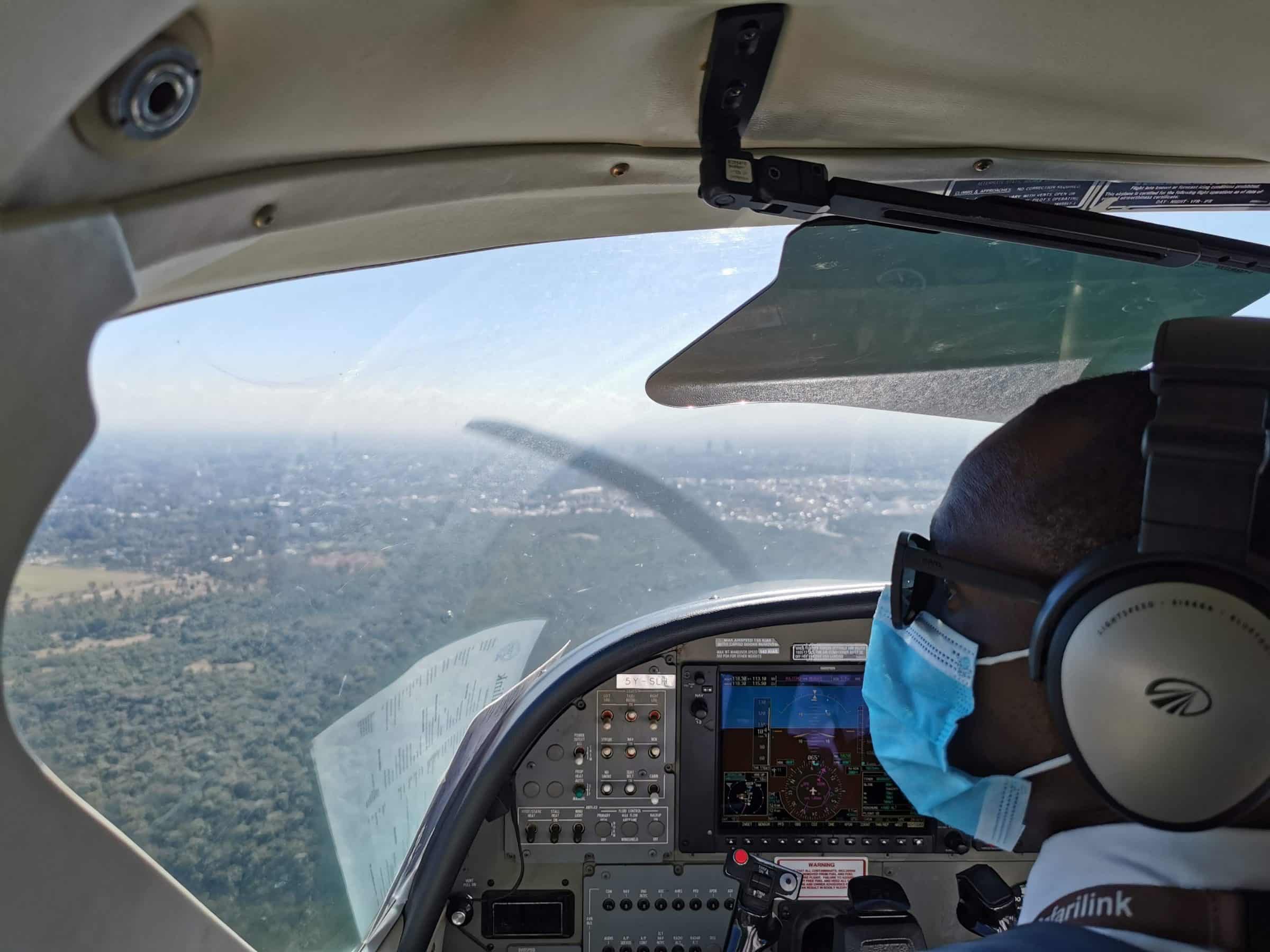
eating lions
This is probably what most people come for, the lions. And preferably a large group that has just killed an animal or is eating it. During my 2nd safari day I was lucky enough to see with my own eyes how a group of lions eat a feast.
Note: The images below can be experienced as shocking.
In the video above, turn on your sound to hear the lions growling over a piece of meat. Our 4×4 safari car is about 10 meters away from the lions, so you get really close. They are intense images, but nature is simply cruel. Lions also have to eat and it looks like this. In the video below you can also see how (someone, not me) filmed a young zebra. This zebra is devoured by a group of lions.
Tip: Do you want a chance to see a lion kill with your own eyes? During the day, lions mainly sleep in the shade and during sunrise or around sunset they become active again for hunting. The greatest chance to see the lions hunting and feeding is therefore around sunset or just after sunrise.
Beautiful landscapes
What also gave me a great euphoric feeling was the beauty of the environment. You will be treated to beautiful images during a Great Migration safari. Not only of the animals but also of the beautiful landscapes. It is not difficult to take great pictures here. The large grassy plains, in combination with beautiful clouds and a stray tree, are perfect for photographers.
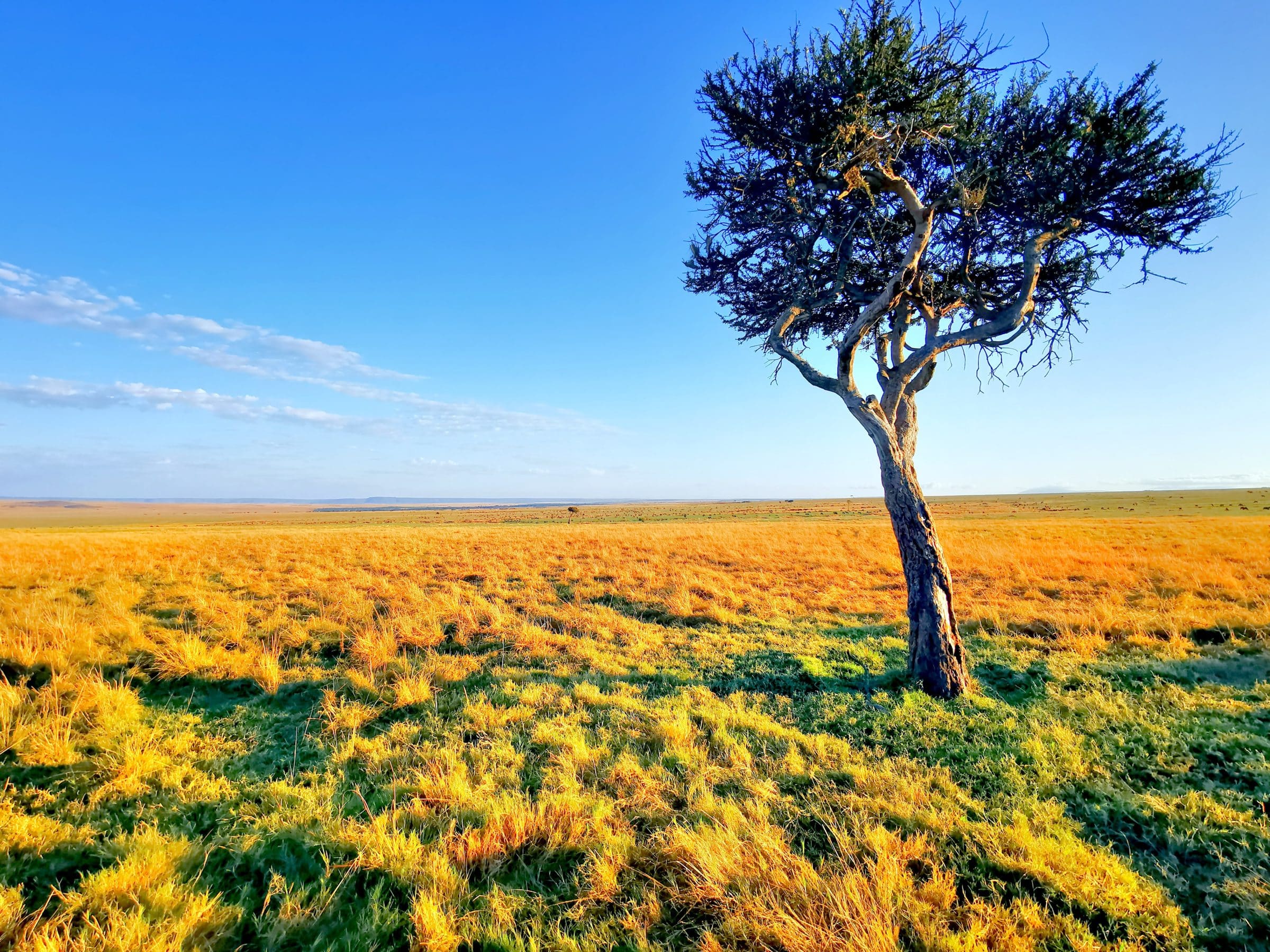
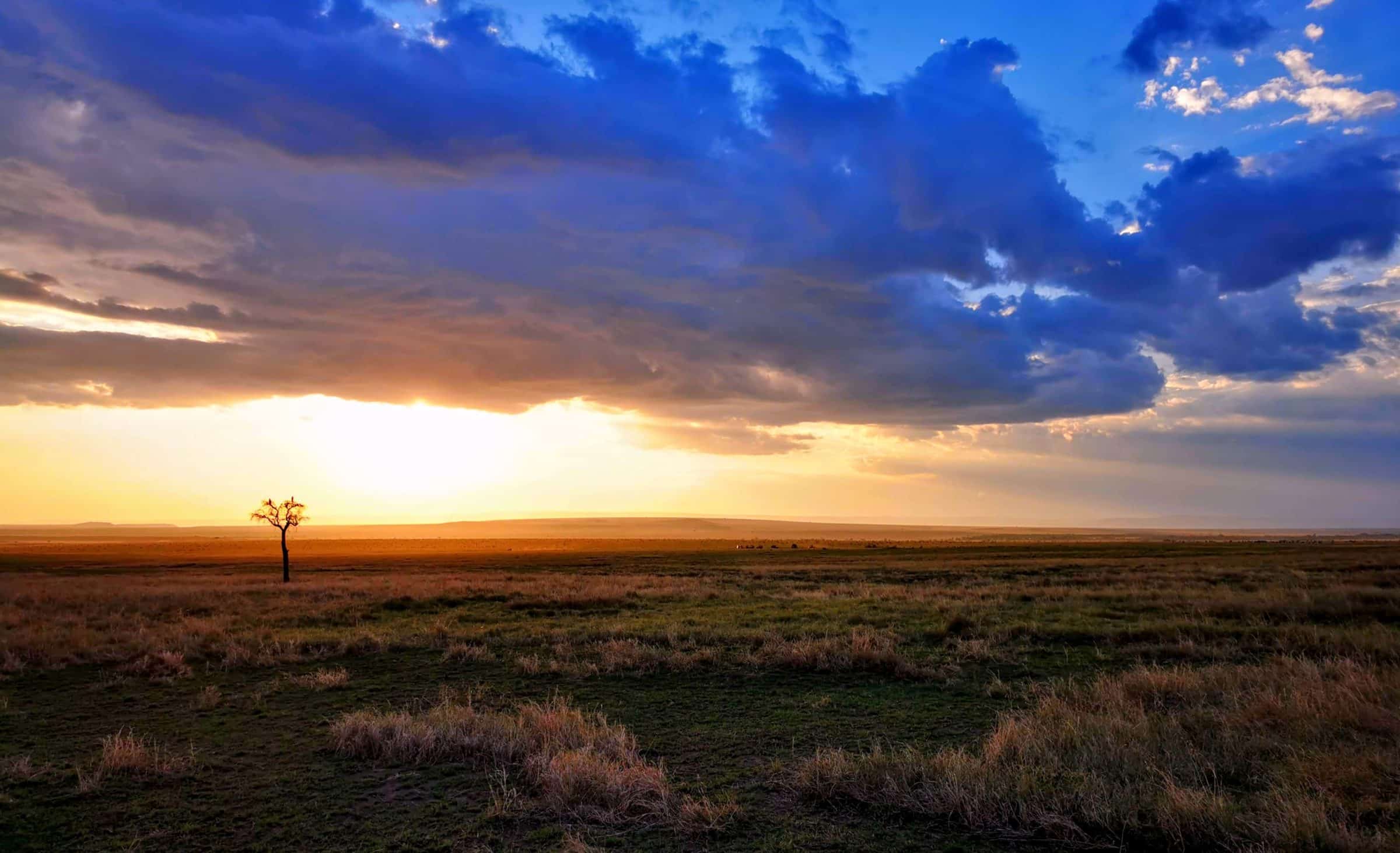
A great offroad 4×4 adventure
Safaris in the Masai Mara and Serengeti are also a great 4×4 adventure. As a car fanatic I thought this was perhaps one of the best things to experience!
Because there are no roads and it can sometimes rain heavily, a 4×4 is a must. You will regularly have to navigate through a large puddle of water, mud or river. Below is a video of some mud and river crossings we made in the very old Toyota Land Cruiser from Julia's River Camp, the lodge where I stayed.
You can see from the cockpit how our Masai driver expertly navigates through rivers and mud. Nothing wrong you would think..? But nothing could be further from the truth… The driver behind us thinks it's all a bit exciting, so we get out to give directions. From this perspective, the mud-crossing suddenly looks a bit more intense!
In the 2nd part of the video it is therefore good to see how extreme the conditions can actually be. It's great to see how this 4×4 safari vehicle full of American women experiences the crossing. It resulted in beautiful images:
I can tell you from personal experience that you will be completely shaken up during these rides. That makes it extra fun! I would also like to mention once again that my GoPro camera stabilizes the image very well. Everything beeps, creaks and shakes up and down but the camera keeps the image steady. Cheers to GoPro!
beautiful people
Although they are definitely used to tourists in the region of Africa, it doesn't necessarily feel that way. Strangely enough, the people, the Maasai in particular, feel very authentic. They are always happy to speak to you and they do their very best to make you feel comfortable. Without being intrusive! You get a friendly smile every time.
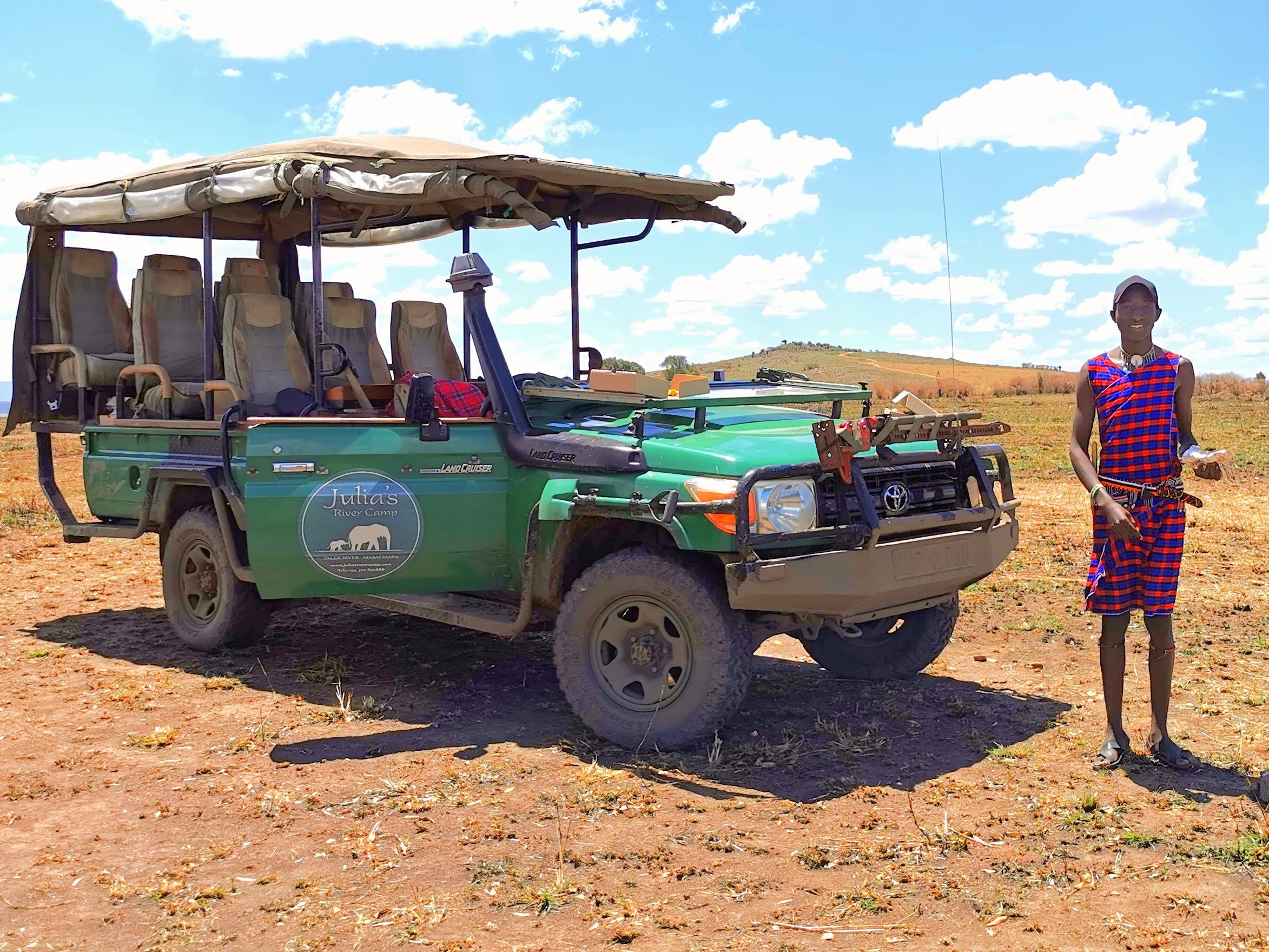
More than once it happened that we were just on the road for an hour or two longer. To still look for a Leopard or group of elephants. They tell you about their land, how they learned to live with the animals and what they do to protect the area.
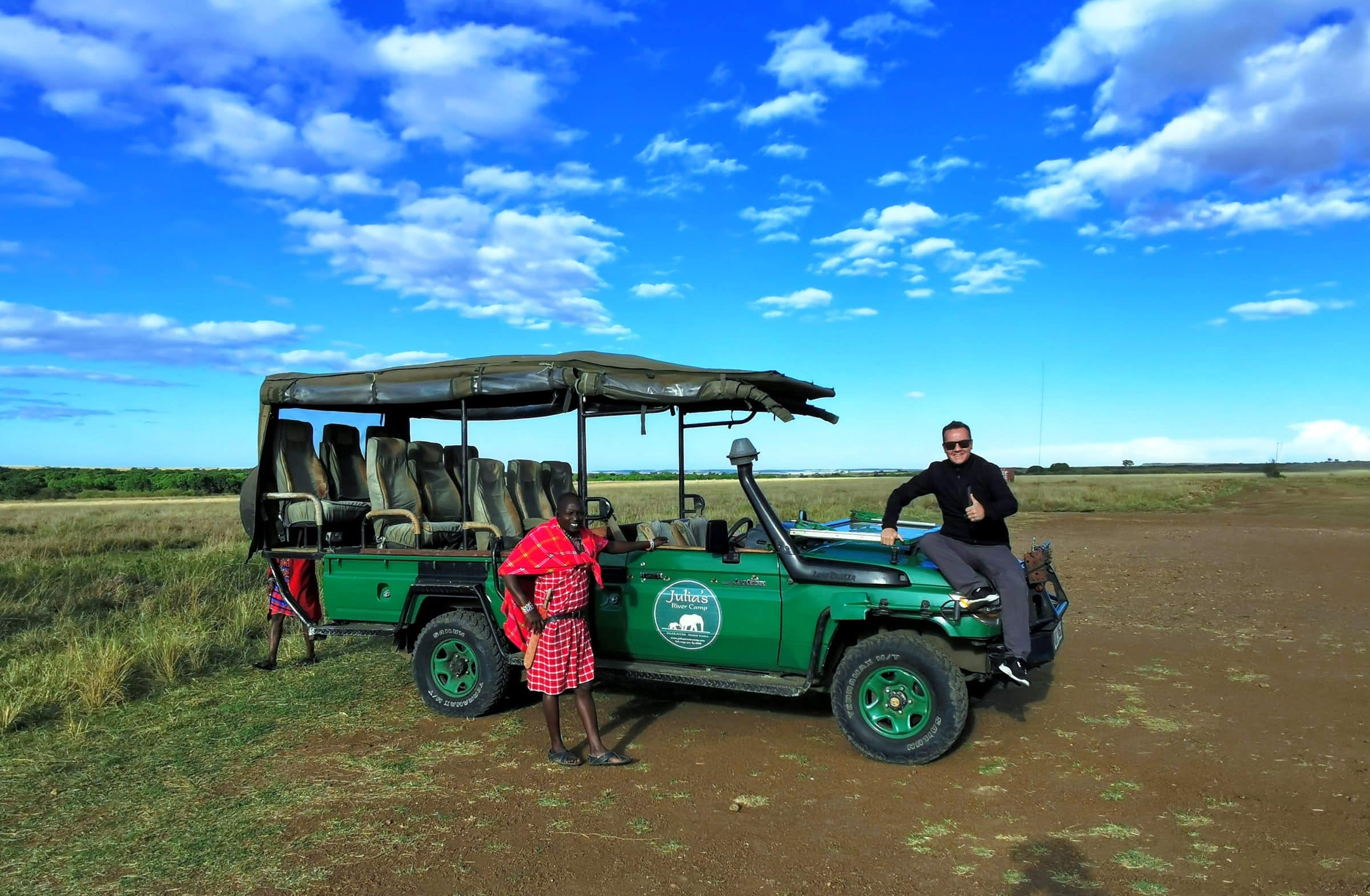
My stay: Julia's River Camp
I had arranged the safaris in advance by booking an all-in accommodation at Julia's River Camp† Julia's River Camp can be thought of as a budget lodge. For about 100 euros per person per night you can stay here in excellent tents with a hot shower. I also really enjoyed the food.
Note: the price strongly depends on supply and demand in combination with the season.
Still, I can say with some certainty that this is a very good price. For most other lodges in Masai Mara you can usually put down twice to five times as much money for one night.
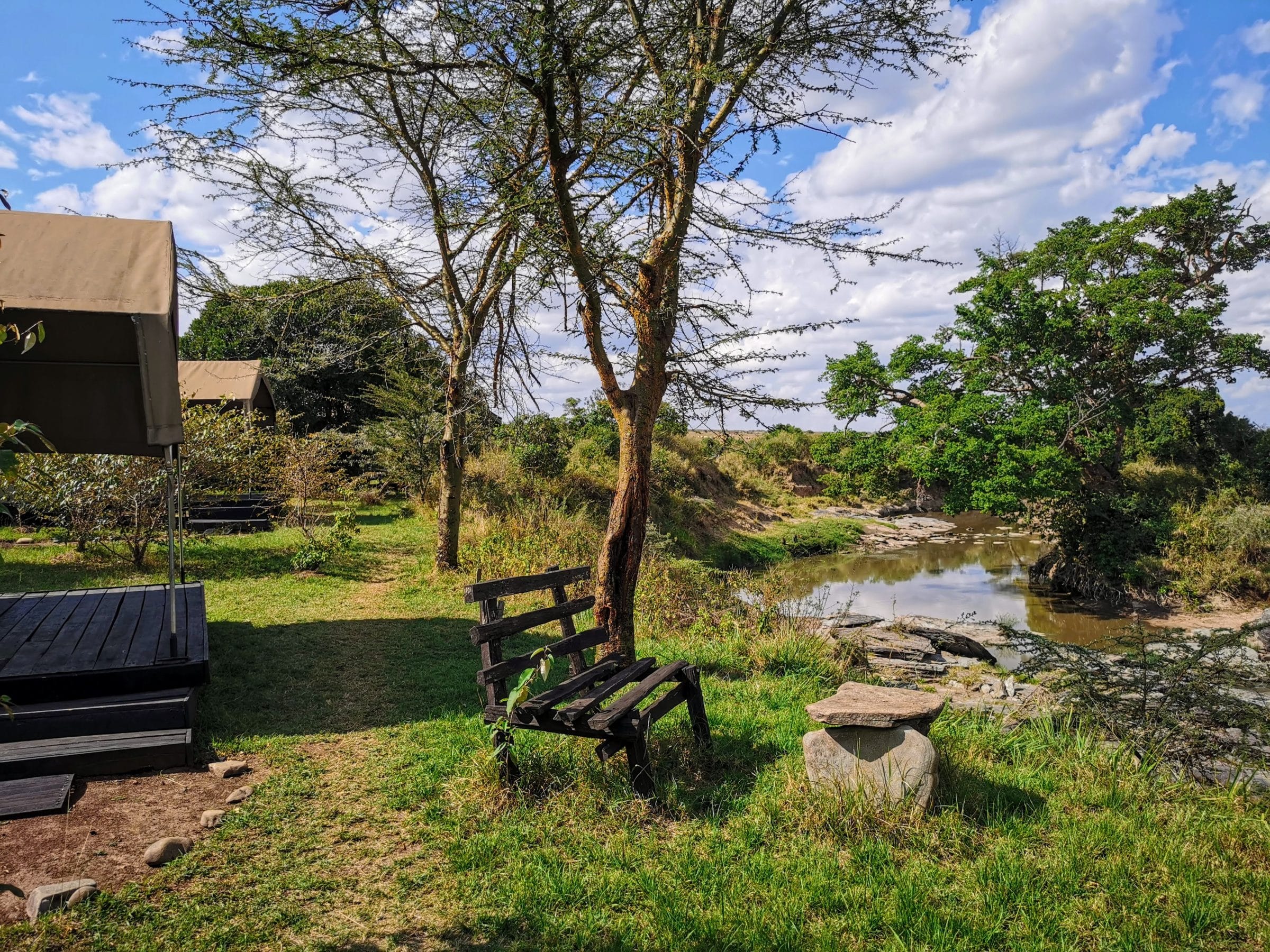
What also makes Julia's River Camp unique is that it is located directly on the river and that the safaris are included. Every morning and evening the different Masai drivers go out with their 4×4. All you have to do is get in! Of course you can also rent a private safari car with driver, although you will have to pay extra for this.
Although the safaris are great, it should also be mentioned that the game can be seen right in front of your tent. Because the camp is located directly on the river, there is a lot going on here. Hippos, giraffes, elephants and large groups of baboons. You can simply look out in front of you from the benches at the restaurant with a cup of coffee.
As soon as the sun goes down, you are no longer allowed to leave your tent independently, this is always supervised. Not surprising at all when you consider that before you went to sleep you saw the hippos bathing in the mud 15 meters in front of your tent.
More Worldly Articles:
- Worldly | All countries in the world | List of countries + population
- Worldly | What are the 10 largest countries in the world?
- Worldly | What are the largest islands in the world?
- Worldly | How many countries does Africa have? And what is the number of inhabitants?
- Worldly | Which are the safest and most dangerous countries in Europe?
- Worldly | What are the safest and dangerous countries in Africa?
- World wise | Information about the world | Continents, countries and facts
- Worldly | Which languages are most spoken in the world?
- Worldly | What are the 7 Wonders of the World?


